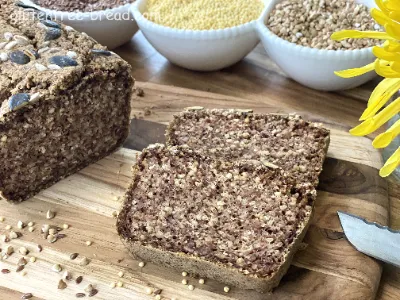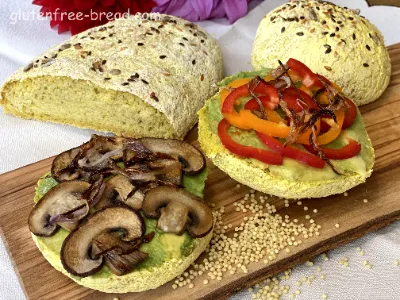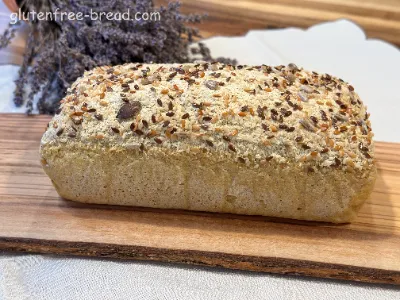Additional info
Gluten-free millet flour bread is a type of bread made using millet flour instead of traditional wheat flour. Millet is a small-seeded grass that is naturally gluten-free, making it a suitable option for people with celiac disease or gluten sensitivity. Here's a description of gluten-free millet flour bread:
Texture and Crumb
- Texture: Millet flour bread tends to have a dense and slightly crumbly texture compared to wheat bread. The lack of gluten means it doesn't rise as much, leading to a denser loaf.
- Crumb: The crumb is often soft but can be a bit gritty due to the nature of millet flour. It may also be slightly moist, depending on the recipe and additional ingredients used.
Flavor
- Taste: Millet flour has a mild, slightly sweet, and nutty flavor. This flavor profile can come through in the bread, making it unique and pleasant.
- Aroma: The bread typically has a warm, earthy aroma, which can be enhanced with the addition of ingredients like honey, herbs, or spices.
Appearance
- Color: The bread usually has a pale yellow color, which comes from the millet flour itself. This can vary slightly based on additional ingredients.
- Crust: The crust can be thin and slightly crispy, though not as robust as traditional wheat bread crusts.
Nutritional Profile
- Health Benefits: Millet flour is rich in essential nutrients like magnesium, phosphorus, and B vitamins. It is also high in fiber and has a lower glycemic index compared to wheat flour, which can be beneficial for blood sugar management.
- Calories and Carbs: Millet flour bread is generally lower in calories and carbohydrates compared to wheat bread, making it a good option for those on specific dietary plans.
Baking Considerations
- Binding Agents: Because millet flour lacks gluten, recipes often include binding agents like xanthan gum, guar gum, or psyllium husk to improve texture and structure.
- Moisture: Gluten-free bread dough tends to be more batter-like rather than a traditional dough, so additional moisture is often necessary. Ingredients like eggs, oil, or yogurt can be added to achieve the desired consistency.
Uses
- Versatility: Millet flour bread can be used in the same way as regular bread. It is great for sandwiches, toast, and as an accompaniment to soups and salads.
- Adaptability: The basic recipe can be adapted with various add-ins like seeds, nuts, dried fruits, or herbs to enhance flavor and nutritional value.
Overall, gluten-free millet flour bread is a nutritious and delicious alternative for those avoiding gluten, offering a unique taste and texture that sets it apart from traditional wheat bread.











